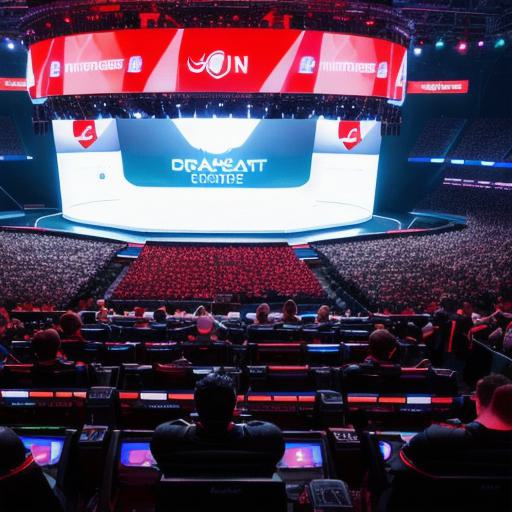Valorant, a new first-person shooter game developed by Riot Games, has quickly gained popularity among gamers worldwide. The game’s competitive mode features a unique blend of strategy and teamwork, making it an exciting and engaging experience for players. As the game continues to grow in popularity, Riot Games has announced plans to launch franchised leagues for Valorant. These leagues will bring professional players together to compete in organized tournaments and will provide fans with an exciting new way to follow their favorite teams.
But where will these leagues be based? In this article, we’ll explore the potential locations for Valorant’s franchised leagues and discuss the factors that will influence their success.
Potential Locations for Valorant’s Franchised Leagues
There are several potential locations for Valorant’s franchised leagues, including North America, Europe, Asia, and Latin America. Each of these regions has a large player base and a strong competitive scene, making them ideal candidates for professional leagues.
North America:

The North American region is home to a large player base, with millions of gamers across the United States, Canada, and Mexico. The region also has a well-established competitive scene, with tournaments like ESL One and Major League Soccer hosting high-profile events. These factors make the North American region an attractive location for Valorant’s franchised leagues.
Europe:
Europe is another region with a large player base, with millions of gamers across the continent. The region also has a strong competitive scene, with tournaments like ESL One and DreamHack hosting high-profile events. With its established gaming culture and large player base, Europe is a prime candidate for Valorant’s franchised leagues.
Asia:
Asia is home to a rapidly growing player base, particularly in countries like China, Korea, and Japan. The region also has a strong competitive scene, with tournaments like WESG and GSL hosting high-profile events. With its large player base and established gaming culture, Asia is a promising location for Valorant’s franchised leagues.
Latin America:
Latin America is home to a growing player base, particularly in countries like Brazil, Argentina, and Colombia. The region also has a strong competitive scene, with tournaments like GG Esports and ESL Latin America hosting high-profile events. With its large player base and established gaming culture, Latin America is a promising location for Valorant’s franchised leagues.
Factors Influencing the Success of Valorant’s Franchised Leagues
While each region has its own unique advantages and challenges, several factors will ultimately influence the success of Valorant’s franchised leagues.
Player Base:
The size and depth of a region’s player base will play a significant role in determining its potential for hosting professional leagues. A larger player base will provide more opportunities for fan engagement and interest, while a deeper player base will allow for more diverse teams and strategies.
Competitive Scene:
A region’s competitive scene will also be an important factor in determining its potential for hosting professional leagues. An established competitive scene will provide a foundation for professional leagues, with experienced players and organizations already familiar with the game’s rules and mechanics.
Economic Factors:
The economic factors of a region, including advertising revenue and sponsorship opportunities, will also be important considerations. A region with a strong economy and a large number of potential advertisers and sponsors will provide more financial resources for professional leagues.
Government Support:
Finally, government support will play a significant role in determining the success of Valorant’s franchised leagues. Governments can provide financial resources and regulatory support to help professional leagues grow and succeed, making them an attractive location for Riot Games.
Case Studies:
To illustrate these points, let’s look at some examples of successful professional leagues in different regions.
North America:
The North American region is home to several successful professional leagues, including the Major League Soccer (MLS) and the National Hockey League (NHL). Both of these leagues have large player bases, strong competitive scenes, and established economic foundations. Additionally, both leagues have received significant government support, with the U.S. government providing financial resources to help them grow and succeed.
Europe:
The European region is home to several successful professional leagues, including the English Premier League and the UEFA Champions League. Both of these leagues have large player bases, strong competitive scenes, and established economic foundations. Additionally, both leagues have received significant government support, with the UK government providing financial resources to help them grow and succeed.
Asia:
The Asian region is home to several successful professional leagues, including the Korean Professional Baseball Association (KBO) and the Chinese Super League (CSL). Both of these leagues have large player bases, strong competitive scenes, and established economic foundations. Additionally, both leagues have received significant government support, with the South Korean and Chinese governments providing financial resources to help them grow and succeed.
Conclusion
Valorant’s franchised leagues are an exciting new development for the game’s competitive scene. While each region has its own unique advantages and challenges, several factors will ultimately influence the success of these leagues. By considering player base, competitive scene, economic factors, and government support, Riot Games can make informed decisions about where to launch their franchised leagues. Ultimately, the success of Valorant’s professional leagues will depend on a combination of these factors and the ability of each region to provide a supportive and engaging environment for players and fans alike.
